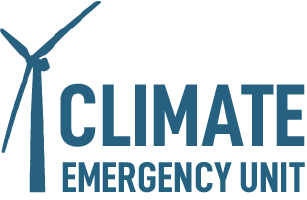Opinion: Message to Ottawa from a young Albertan: Clock is ticking on Canada entering the race to net zero
This article originally appeared in the Calgary Herald.
Wind Turbines at Pincher Creek, Alberta. Herald files PHOTO BY LEAH HENNEL /Calgary Herald
With President Biden’s upcoming visit to Ottawa, I wonder if Prime Minister Trudeau might be a bit embarrassed. After all, the historic Inflation Reduction Act in the U.S. includes “unprecedented investments to tackle climate change.” Meanwhile, the European Union recently introduced a proposal to encourage clean energy and climate investments. Canada hasn’t even entered this race to the top for net zero.
Prime Minister Trudeau talks about “building back better.” But when it comes to climate action, Canada’s federal government isn’t putting money where its mouth is. Under-investing in climate action risks gambling a safe, thriving future for millions of young Canadians like me.
That’s why youth, alongside over a dozen non-profit organizations, advocacy organizations, think tanks, economists, faith organizations and parents are endorsing the 2% For Our Future campaign to urge the federal budget to put our public dollars back into a blue-chip investment: the health, safety, and resilience of Canadian communities. And the upcoming federal budget, out next Tuesday, is a chance to turn things around.
Rewiring the global economy (against a ticking clock) from fossil fuel-based to renewable energy-powered will require shifting where we put our money. The IEA says two per cent of global GDP is needed to meet net zero by 2050.
Closer to home, two per cent of Canada’s GDP is the investment that a recent report by Climate Action Network Canada and the Canadian Centre for Policy Alternatives calls for. The report, Spending What It Takes urges the federal government to invest two cents on every dollar of national income over five years on climate solutions like scaling up renewable energy, investing in jobs and training for workers, supporting Indigenous-led and owned climate policies and projects, ensuring safe and accessible public transit, retrofitting homes, and much more. The funds could also support a Youth Climate Corps to train young people in the skills needed to build the net-zero economy – which could give young people in provinces hard-hit by the transition, like Alberta, a strong reason to stay in the province. An investment of two per cent of GDP is pennies on the dollar to accelerate the renewable energy economy and protect a safe, livable future.
Renewable energy is already more cost-effective than fossil fuels – electricity rates for provinces with more renewable power are consistently lower, reducing energy bills. This should be a big benefit to Albertans, as we have some of the best locations in Canada for both wind and solar projects. Walkable communities and shorter commutes can reduce emissions, improve health, and increase leisure time not spent stuck in traffic.
Indigenous-led and owned climate policies and projects will tap into deep, community-based knowledge and a long history of safely stewarding nature. Investing in economic diversification projects to create good, clean jobs for workers and young people will help ensure that no one is left behind.
Earlier this week, the Intergovernmental Panel on Climate Change released its latest report, on the latest science of climate change. The finding? In one sentence: humans are unequivocally causing climate change by burning fossil fuels and current government action and spending are not enough to secure a livable future.
The blame is no longer just on fossil fuel companies who knew about climate change and hid the science decades before we were born. Scientists and activists have been sounding the alarm for years: government leaders have known for decades now, too.
The question is: when will politicians finally listen and make the critical investments today that safeguard our future? Or will Canada, and Alberta, be left in the dust as other, wise countries race to the top of a thriving net zero future?

